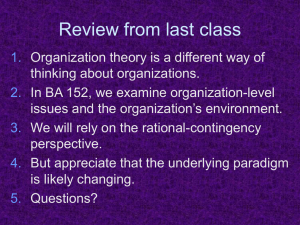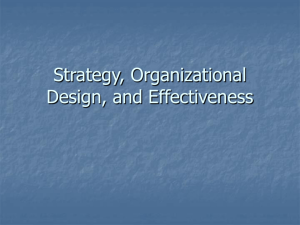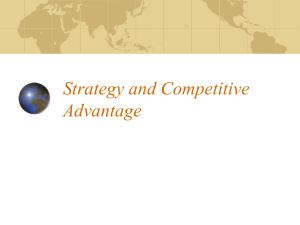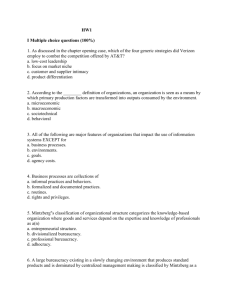Overall Low-Cost Provider Strategy Broad Differentiation Strategy
advertisement
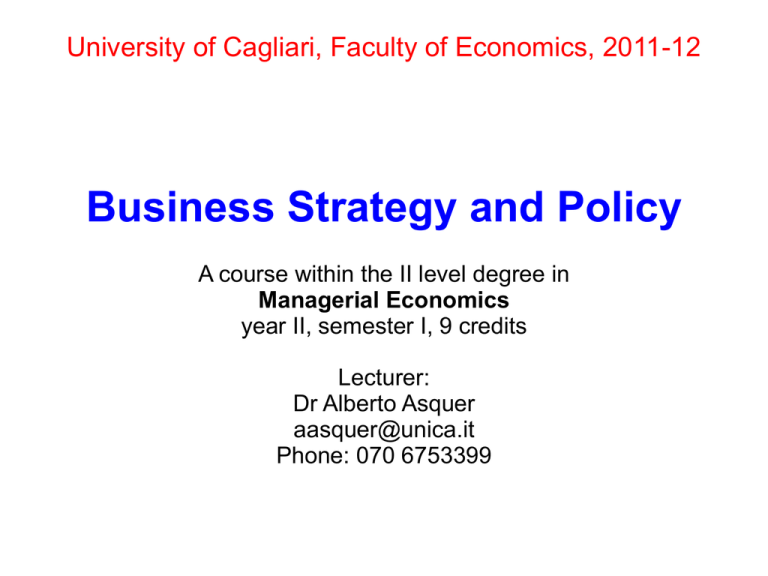
University of Cagliari, Faculty of Economics, 2011-12 Business Strategy and Policy A course within the II level degree in Managerial Economics year II, semester I, 9 credits Lecturer: Dr Alberto Asquer aasquer@unica.it Phone: 070 6753399 Introduction 0. Strategic positioning and the generic competitive strategies 1. Low-cost strategies 2. Differentiation strategies 3. Combining low-cost and differentiation: best-cost strategies 4. Focus or market niche strategies ------------5. Summary 0. Strategic positioning and the generic competitive strategies Broad Differentiation Strategy Best-Cost Provider Strategy Overall Low-Cost Provider Strategy Focused Low-Cost Strategy Focused Differentiation Strategy 1. Low-cost strategies The basis for sustained competitive advantage is lower overall costs than competitors One way is to perform value chain activities more cost-effectively than competitors Another way is to reconfigure the value system in such a way as to bypass or eliminate non-essential activities altogether 1. Low-cost strategies Typical actions to improve cost-efficiency of the value chain: Exploit economies of scale Climb up the experience/learning curve Operate at full capacity Boost sales volumes Improve supply chain efficiency integration Use low-cost materials Use online and other IT systems Use labour-saving methods Leverage on your bargaining power Use outsourcing and vertical 1. Low-cost strategies Typical actions to reconfigure the value system: Bypassing intermediates and directly sell to customers Replace activities with faster and cheaper ones Streamline operations by eliminating activities that are not needed or deliver little value Relocate facilities to save shipping (and sometimes labour costs) Simplify the product (no-frills) Narrow the product line 2. Differentiation strategies The basis for sustained competitive advantage is “being different” possibly, in a way that is difficult to imitate Sources of differentiation are found in: - Supply chain activities - R&D activities - Production and technology activities - Distribution activities - Marketing activities And differentiation works by making the product 1) cheaper to use; 2) better performing; 3) better satisfy the consumer; 4) faster to reach consumer. 3. Combining low-cost and differentiation: best-cost strategies The basis for sustained competitive advantage is the ability to incorporate attractive or upscale attributes at a lower cost than rivals It's a 'middle ground', or 'hybrid', strategic approach that seeks to combine low cost and differentiation There is the risk to be “stuck in the middle” (Porter, 1980) 4. Focus or market niche strategies The basis for sustained competitive advantage is the specialisation to serve the particular needs (solve the specific problems) of selected targets within the consumers market There are two variants: 1) Focused low-cost strategy 4. Focus or market niche strategies The basis for sustained competitive advantage is the specialisation to serve the particular needs (solve the specific problems) of selected targets within the consumers group There are two variants: 2) Focused differentiation strategy 5. Summary Main points The generic strategies provide broad strategic guidelines as to formulate the strategic direction for the company Low-cost and differentiation provide the main 'themes' of several strategies that successful companies pursue There is also some 'variations on a theme': best-cost, focused lowcost, and focused differentiation strategies
